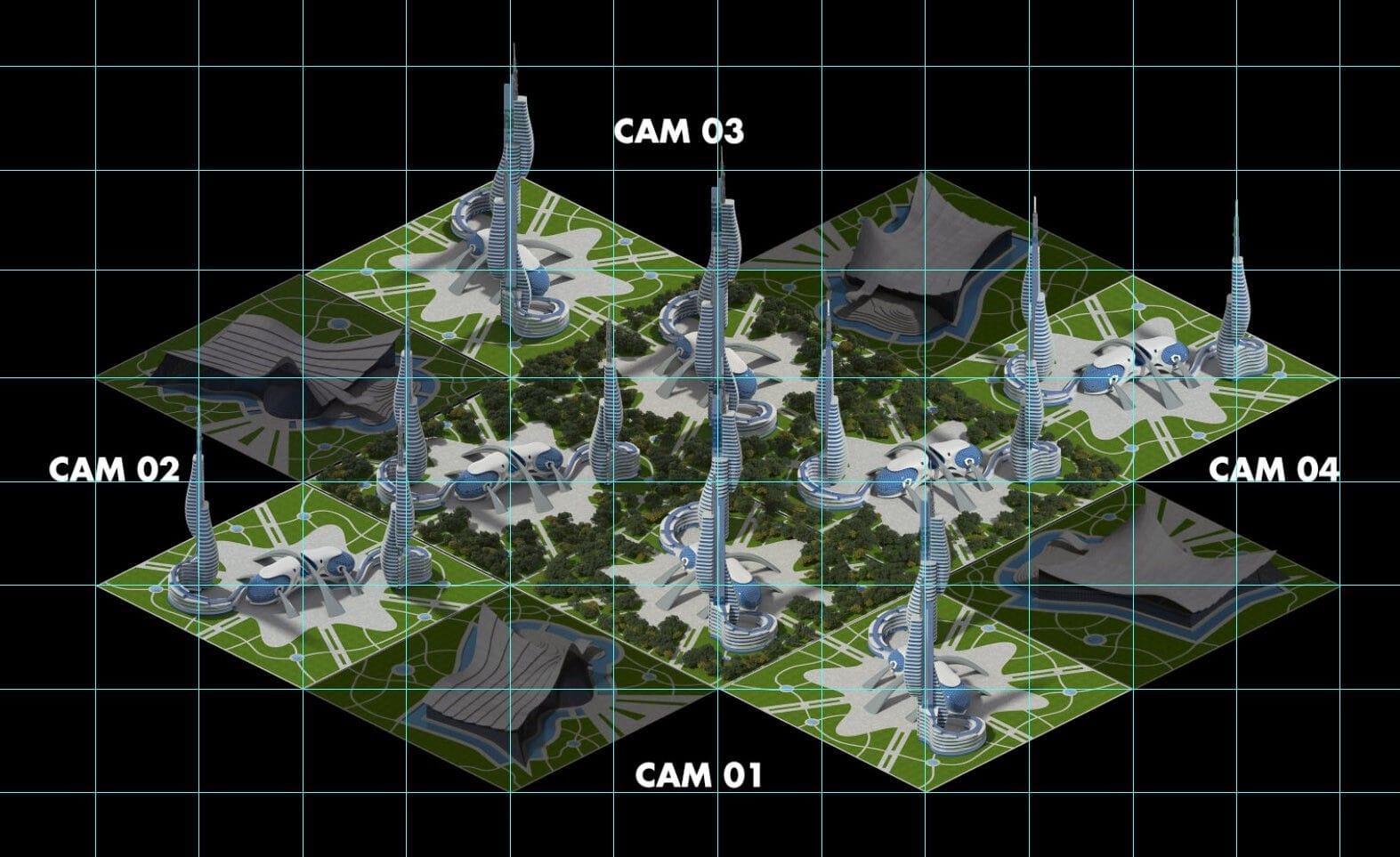Curious about “dimetric projection” and how it makes 3D objects understandable in 2D? This guide provides a clear, step-by-step explanation with illustrative examples, breaking down this powerful visualization technique.
What is Dimetric Projection?
Dimetric projection is a clever technique used to represent three-dimensional objects on a two-dimensional surface. It’s a form of axonometric projection, meaning the object is rotated and then “flattened” onto the page, a process called foreshortening, to create the illusion of depth. Unlike perspective drawing, where parallel lines converge in the distance, dimetric projection keeps parallel lines parallel.
Dimetric projection is unique because it foreshortens two axes equally while the third axis has a different foreshortening factor. Think of a cube: two sides might appear equally shortened, but the vertical lines representing height would shrink differently. This creates a slightly skewed, asymmetrical view that often feels more natural. It strikes a balance between the simplicity of isometric projection (where all axes are equally foreshortened) and the complexity of trimetric projection (where all three axes have different foreshortenings).
[For a comprehensive overview of related mathematical concepts, refer to our detailed derivative cheat sheet, which provides an organized summary of essential derivative formulas.]
Key Points of Dimetric Projection:
- Creates the illusion of 3D on a 2D surface.
- Parallel lines remain parallel.
- Two axes are foreshortened equally, while the third is different.
- Allows emphasis on certain features.
- Viewpoint affects foreshortening and angles.
- Scales maintain accuracy and proportions.
- Offers a balance between simplicity and information.
- Used in technical drawings, architectural plans, diagrams, CAD software, and video games.
Dimetric vs. Isometric: Choosing the Right Tool
Both dimetric and isometric projections represent 3D objects in 2D, but they employ different techniques. Understanding their strengths and weaknesses helps determine which method is best suited for a specific task.
Isometric Projection: The Balanced View
Isometric projection foreshortens all three axes equally. Imagine looking at a cube from a corner where three sides are visible. All angles between the projected axes are 120 degrees, creating a symmetrical look. This simplicity makes construction easy, often requiring just a ruler and protractor. It’s commonly used in technical drawings, especially for parts diagrams and assembly instructions where clarity is paramount. Isometric projection is also a staple in pixel art and older video games, contributing to their retro aesthetic.
However, this equal scaling makes true depth perception difficult. Objects appear slightly flattened, and circles become ovals. While easy to construct, isometric projection might not be suitable when realism or accurate depth representation is crucial.
Dimetric Projection: A Touch of Realism
Dimetric projection differentiates itself by using two equal scales and one differing scale. This subtle change enhances the sense of depth and perspective. Objects appear less flattened and more three-dimensional, providing a more natural look. While circles are still not perfectly round, they exhibit less distortion than in isometric views.
This realism comes with increased complexity. Setting up a dimetric projection requires more calculation and planning, often necessitating CAD software. Despite this, dimetric projection is favored when a more realistic portrayal is needed, such as in architectural drawings, interior design renderings, and illustrations where a natural-looking perspective is critical.
[To further enhance your understanding of complex systems, delve into our engaging DNA triplet crossword, a fun and interactive way to test your knowledge of genetic sequences.]
Isometric vs. Dimetric: A Summary
| Feature | Isometric Projection | Dimetric Projection |
|---|---|---|
| Axis Scaling | All axes scaled equally | Two axes scaled equally, one axis scaled differently |
| Appearance | Balanced, symmetrical, slightly distorted | More realistic, less distorted |
| Construction | Simple | More complex |
| Applications | Technical drawings, pixel art, older video games | Architectural drawings, interior design, illustrations |
| Depth Perception | Less realistic | More realistic |
Ongoing research explores enhancing these projections with shading, texture, and animation to further improve realism. Choosing between isometric and dimetric depends on the project’s specific needs – balancing simplicity with the desired level of realism.
Trimetric Projection: A Brief Overview
Trimetric projection, another axonometric projection, foreshortens all three axes differently. This offers maximum flexibility in controlling the final image but comes with significant complexity. It’s the most realistic of the axonometric projections, but the complexity involved often restricts its use to specialized applications.
Dimetric Drawing in Practice
Dimetric drawing, with its two equally foreshortened axes and one uniquely scaled axis, serves as a powerful tool for visual communication across various fields. Its subtle asymmetry can resonate more closely with how we perceive real-world perspectives. This makes it particularly valuable in architectural blueprints, engineering diagrams, and even video game environments seeking to balance realism with the efficiency of 2D representation.
While specific angles and foreshortening ratios can vary based on the object and intended message, the choice between dimetric and other projections hinges on balancing the need for perfect symmetry (isometric) with the desire for a more natural-looking visual. Dimetric projection excels where a slight skewing of perspective enhances the realism without overly complicating construction. The field of visual perception is constantly evolving, suggesting future applications of dimetric principles in 3D modeling and virtual reality could leverage even more sophisticated techniques.
Conclusion
Dimetric projection, a versatile tool for representing 3D objects in a 2D world, offers a compelling blend of simplicity and informative visual representation. By understanding the nuances of axis scaling, foreshortening, and perspective, you can effectively leverage this technique for clear and engaging communication across diverse disciplines. As technology evolves, we can expect even more refined and impactful uses of dimetric projection in design, engineering, and beyond.
- Unlock Elemental 2 Secrets: Actionable Insights Now - April 2, 2025
- Lot’s Wife’s Name: Unveiling the Mystery of Sodom’s Fall - April 2, 2025
- Photocell Sensors: A Complete Guide for Selection and Implementation - April 2, 2025

















1 thought on “Understanding Dimetric Projection: A Comprehensive Guide”
Comments are closed.